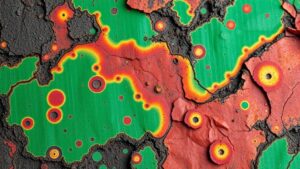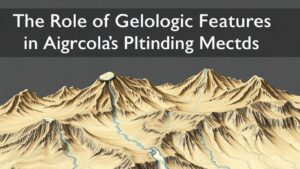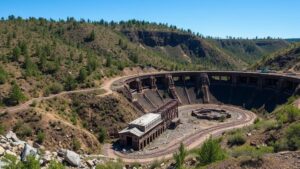How to Dowse for Metal Deposits in Highly Magnetic Rock Formations
How to Dowse for Metal Deposits in Highly Magnetic Rock Formations
Dowser techniques, traditionally associated with locating water sources, are increasingly being employed to locate metal deposits. This approach can be particularly challenging in environments with highly magnetic rock formations, as magnetic interference can disrupt the dowsing process. This article provides a thorough guide on how to effectively use dowsing methods in such challenging geological conditions.
Understanding Dowsing
Dowsing is a practice that uses a forked stick, pendulum, or metal rods to locate underground resources. Dowsers believe they can tap into a subconscious sensitivity to energy fields around objects, including minerals and metals. While the scientific community often challenges the validity of dowsing, proponents cite anecdotal evidence and various case studies where dowsing has successfully identified mineral deposits.
Challenges of Magnetic Rock Formations
Highly magnetic rock formations can pose significant challenges in dowsing for metal. Magnetic minerals in rocks can distort or corrupt the natural electromagnetic fields, making it difficult for the dowser to discern signals from the intended target. Understanding these challenges is crucial for developing effective dowsing strategies.
- The presence of magnetite and hematite can significantly impact dowsing rods behavior.
- Increased background noise can lead to false positives in signal detection.
Techniques for Effective Dowsing
Preparation and Knowledge
Before embarking on a dowsing expedition, one must invest time in understanding the geological composition of the targeted area. Use professional geological surveys and magnetic anomaly maps to pinpoint regions where metal deposits are likely to be present. This background knowledge enhances the effectiveness of dowsing by narrowing down search areas.
Tools for Dowsing
Several tools can be employed in the dowsing process. most common include:
- Y-rod: A forked stick often made of willow. The user holds the ends of the stick, with the fork pointing forward, to detect movements.
- Pendulum: A weighted object suspended on a string, which swings in response to energy fields.
- Metal rods: Straight lengths of metal, typically copper, which can cross or separate depending on the nearby metal content.
Field Techniques
Once equipped with the necessary tools, the following field techniques can enhance dowsing accuracy in magnetic regions:
- Site Familiarization: Spend time acclimating to the site and noting its natural magnetic characteristics. Make initial observations without dowsing to establish a baseline for natural electromagnetic activity.
- Controlled Movements: Move slowly and steadily. Quick movements can inadvertently increase confusion, especially in magnetically active zones.
- Angle of Approach: Approach the suspected site from various angles to determine which orientation yields the strongest response from the dowsing tools.
Reading Responses
Interpreting the movements of dowsing tools relies heavily on user experience. Dowsers should take note of consistent patterns during fieldwork:
- A firm pull or swing of the dowsing tool indicates a potential deposit.
- Inconsistent or erratic movements may signal interference from magnetic rocks.
Case Studies
Example: The Copper Hills Project
At the Copper Hills site, dowsers integrated traditional methods with magnetic data analysis to locate hidden copper deposits. By first identifying areas with lower magnetic interference, they successfully guided exploratory drilling that confirmed the presence of copper at significant depths.
Example: The Silver Valley Exploration
In Idahos Silver Valley, dowsers utilized pendulums and Y-rods, successfully identifying veins of silver amidst extensive magnetite-rich formations. r ability to discern specific responses helped geologists refine their drilling strategies, ultimately reducing costs and improving efficiency.
Conclusion: Practical Implications and Takeaways
Dowser techniques can complement geological surveys when searching for metal deposits in highly magnetic rock formations. Although challenges exist due to magnetic interference, understanding the local geology and employing strategic dowsing practices can lead to successful identification of metal resources. For practitioners, a combination of traditional dowsing and modern geophysical techniques can maximize results.
For those interested in pursuing dowsing in metal exploration:
- Invest in quality dowsing tools and familiarize yourself with their usage.
- Conduct thorough geological research to understand potential magnetic interferences.
- Practice in various environments to hone your skills before tackling highly magnetic sites.
With diligence and informed strategies, dowsing can prove to be a valuable tool in the exploration of metal deposits, even in challenging terrains.



